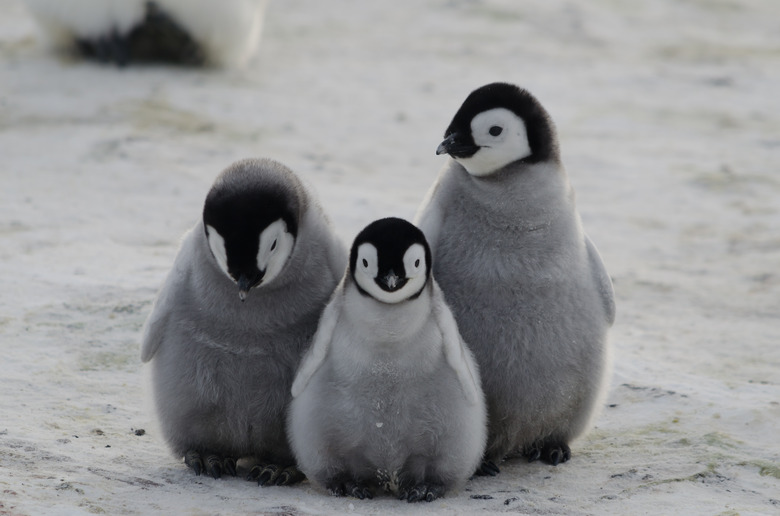Animal & Plant Life Cycles
The life cycles of plants and animals may seem very different at first glance, but there are many biological similarities between them. Although each individual animal and plant species has its own specific life cycle, all life cycles are the same in that they begin with birth and end with death. Growth and reproduction are two of the central components of the life cycles of plants and animals.
Plants
Plants
Plants are stationary organisms that sprout from a single place in the soil or ground and remain there for the rest of their lives. Although some plants may spread across a surface, such as ivies, many remain in a very small area from germination to death or consumption. The basic life cycle of a plant begins from a seed, which grows, flowers and produces seeds of its own. Some plants complete this process in the space of weeks, while other plants, such as trees, live for hundreds of years.
Plant Reproduction
Plant Reproduction
The reproduction of plants is heavily dependent on fertilization by birds and insects. When feeding, birds and insects carry pollen between plants, which fertilizes the plants and creates seeds. At other points, a bird or mammal may eat the seed of a plant without being able to digest it and deposit it elsewhere as excrement. Seeds germinate with sufficient soil cover, water and warmth. Some plants die after a single season of growth and reproduction, while other plants live perennially.
Animals
Animals
Animals follow a life cycle similar to plants. Reproduction followed by a new organism's growth and maturation and eventual reproduction create the life cycle of animals. Animals are born from eggs or carried in a womb and born vaginally. Once born, animals must survive infancy and mature to an adult form before being to create another generation of animals. Animals, such as flies and insects, live for brief periods while others, such as mammals, live much longer. Some species of turtle can live for hundreds of years.
Reproduction
Reproduction
Animal reproduction is often very different from plants. While plants are fertilized by external forces like wind and animals, animals must copulate in order to reproduce. If a viable fetus is created, the female animal gives birth to the infant and the animals care for the offspring until it reaches maturity. Once animals are able to fend for themselves, they seek out their own sources of food and find mates to continue the life cycle.
Significance
Significance
The life cycles of plants and animals are often related. Plants and animals reproduce most commonly in the springtime, when food is abundant. Although there are many variations on the basic life cycle of plants and animals, the similarities create relationships between both types of organism. Plants are often heavily dependent on animals for their own reproduction, and animals could not live to maturity without feeding on plants or other organisms.
Cite This Article
MLA
Richards, Bailey Shoemaker. "Animal & Plant Life Cycles" sciencing.com, https://www.sciencing.com/animal-plant-life-cycles-6392248/. 13 March 2018.
APA
Richards, Bailey Shoemaker. (2018, March 13). Animal & Plant Life Cycles. sciencing.com. Retrieved from https://www.sciencing.com/animal-plant-life-cycles-6392248/
Chicago
Richards, Bailey Shoemaker. Animal & Plant Life Cycles last modified March 24, 2022. https://www.sciencing.com/animal-plant-life-cycles-6392248/
